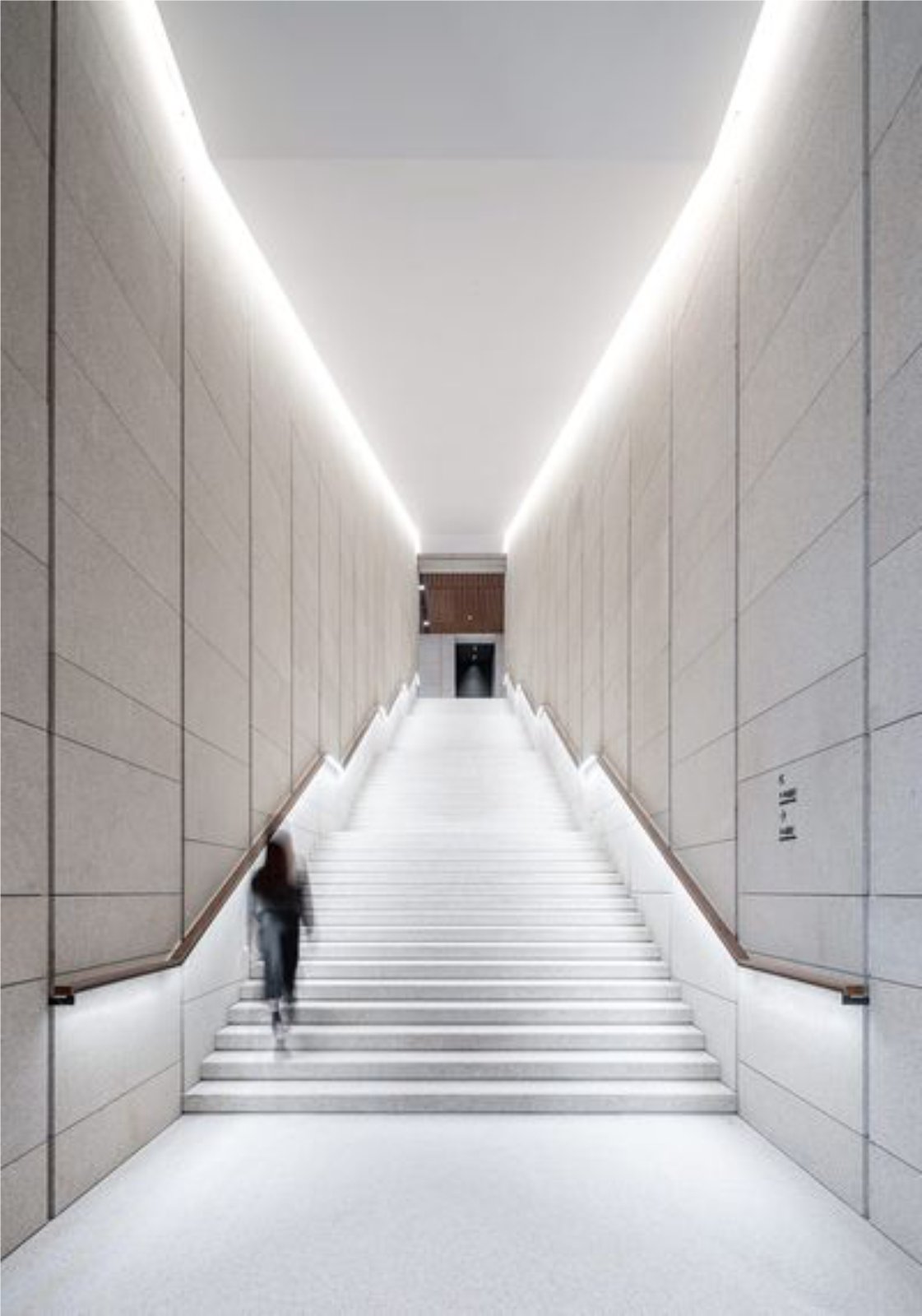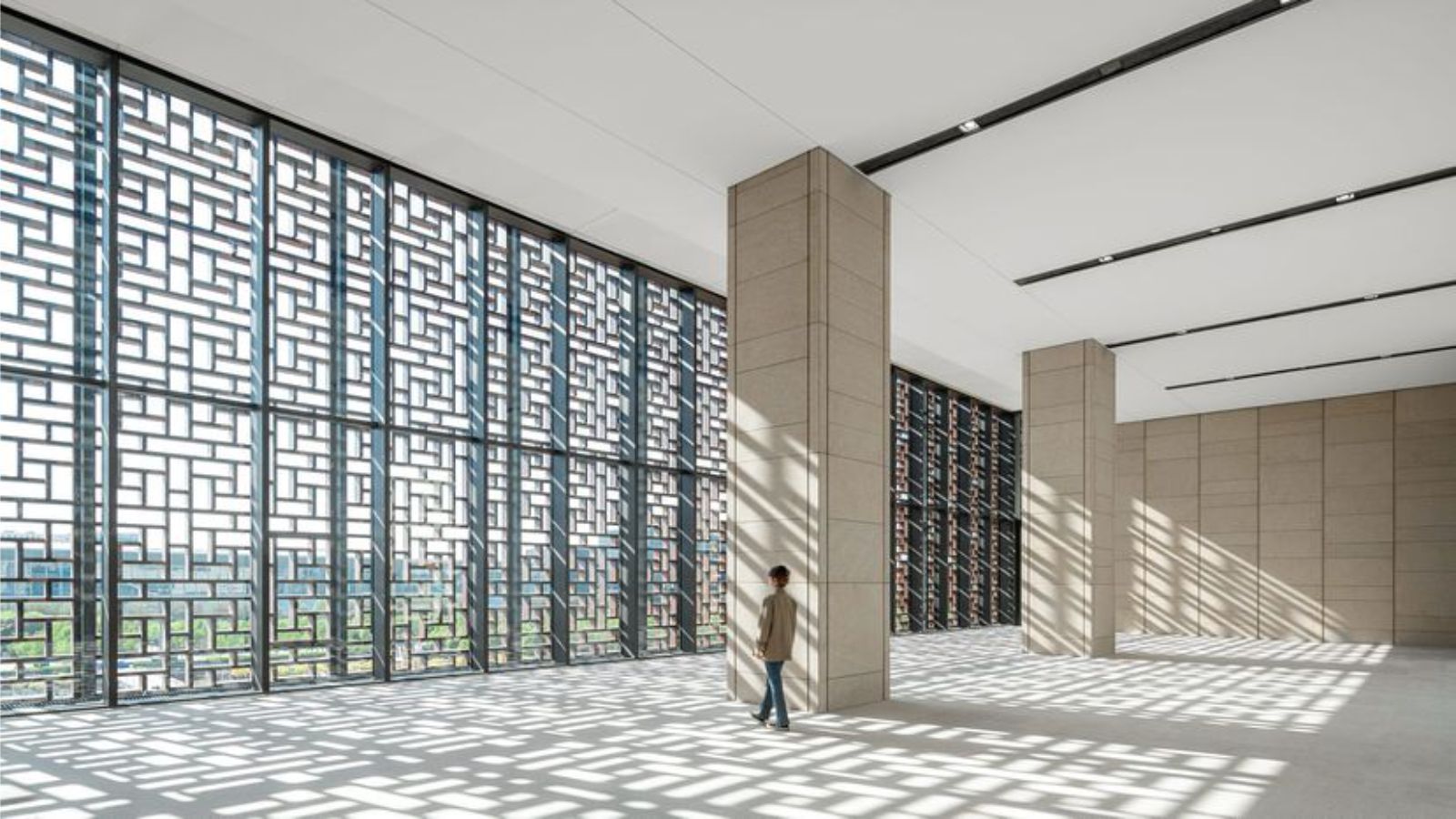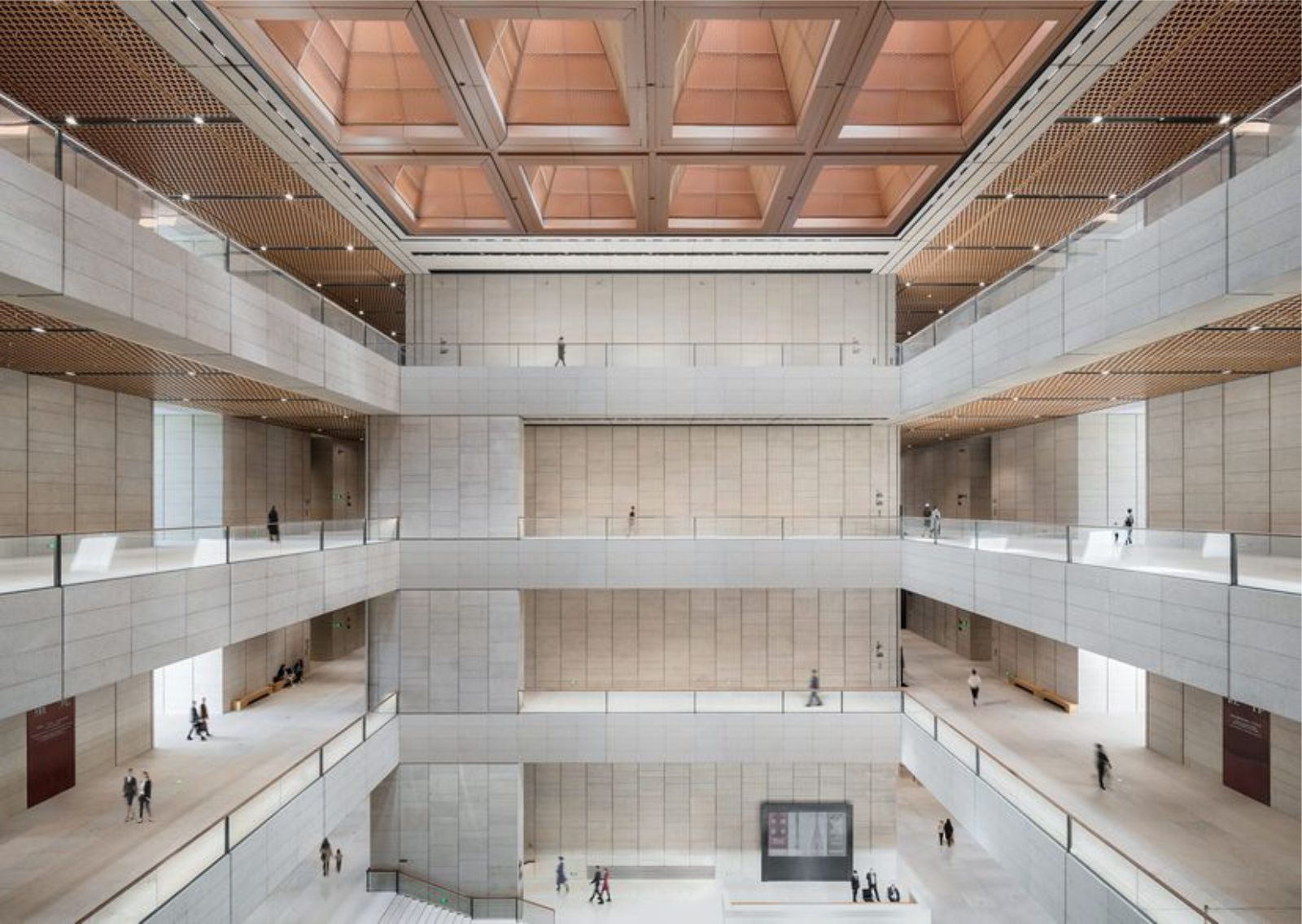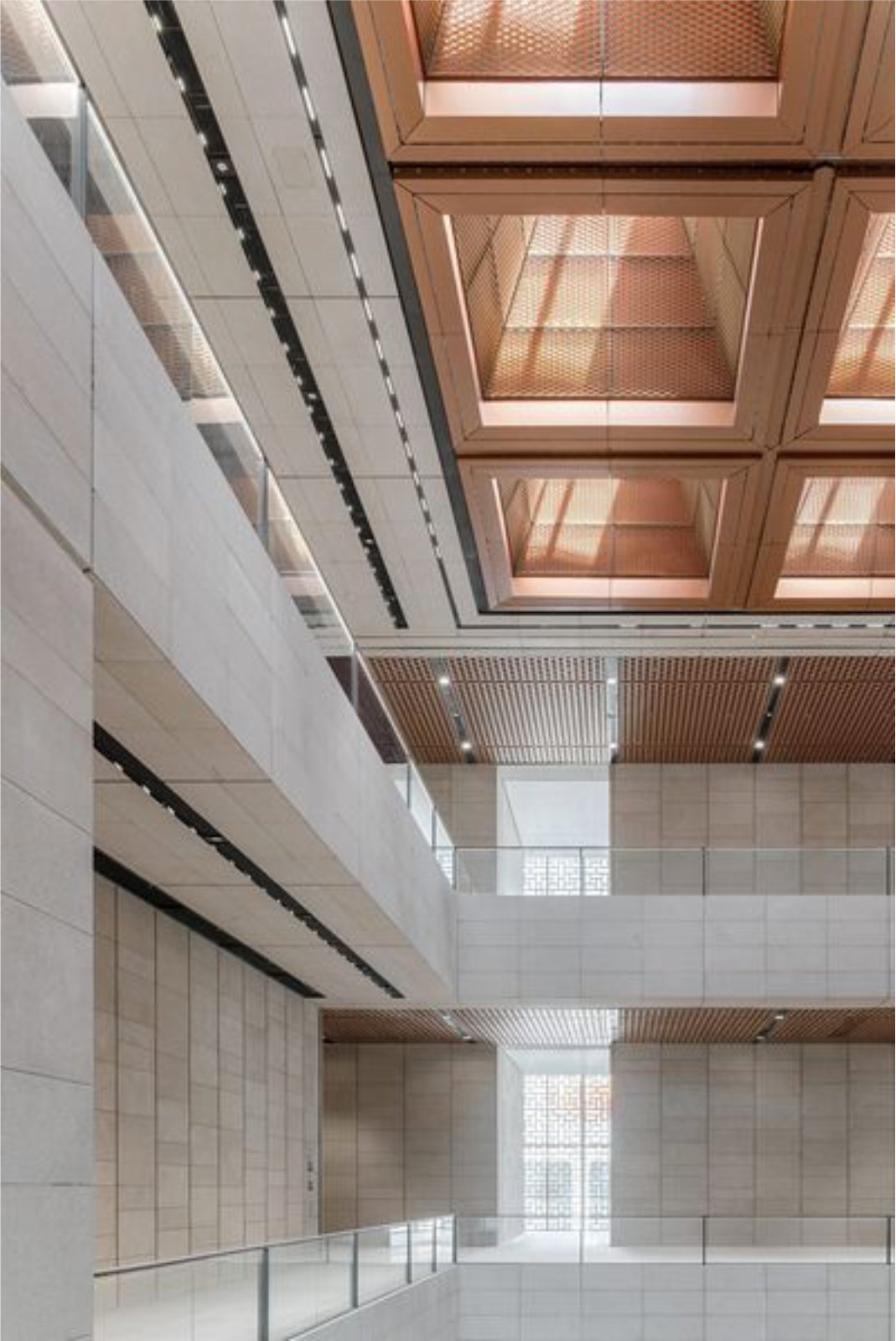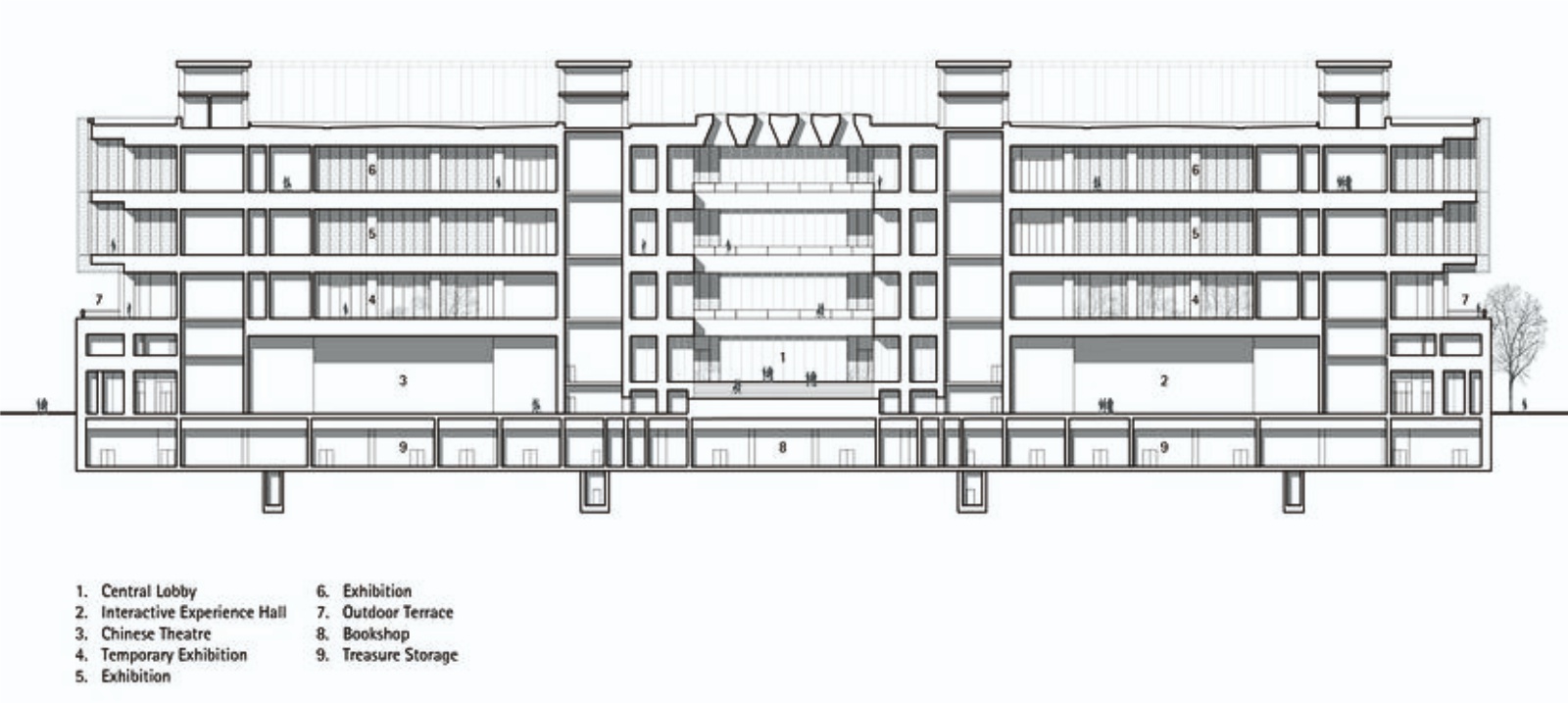The National Museum, which combines two new museums for the display of China’s cultural heritage, forms an important component of the new cultural quarter in the Olympic Green in Beijing. It marks the northern end of Beijing’s Central Axis.
With its changing color and light effects created by the sculptural structuring of the façade, the building is clearly visible from near and far. For the first time, an opportunity is provided to present valuable collections of Chinese arts and crafts and items of intangible cultural heritage at national level.

The building comprises three distinct dimensionally and structurally coordinated parts: the plinth built with light-colored Xiu Shi granite, the glazed intermediate area, and the copper-colored main body floating above.
This division into three parts means that a roofed-over terrace is created at a height of 13.50 meters, providing public space all round the building.
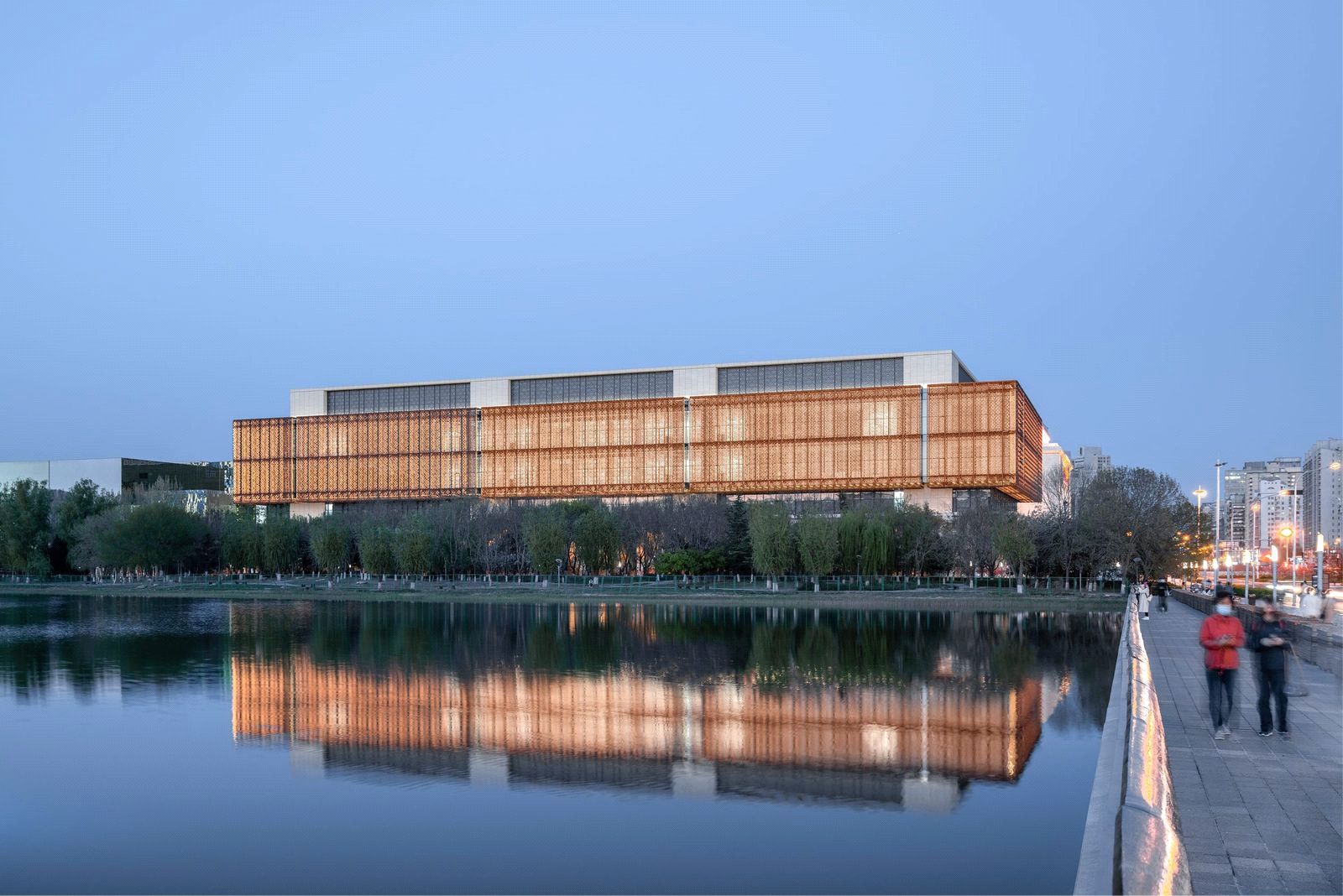
The two entrances to the museum, thus providing access points to the square to the east as well as to the river bank to the west, lead to the shared central foyer. The space is open through the height of the building and receives daylight through square roof lights.
As visitors make their way along the balconies to the exhibition halls they enjoy varying vistas of the space. The detailing of the wall and ceiling elements resonates with the design of the building envelope in terms of structure and color.

The museum functions are arranged over three stories, with the temporary exhibitions allocated to the glazed intermediate level and the permanent exhibitions to the two stories of the main building volume.
The structural design of the building with its large column-free areas lends itself to a flexibly subdivided space with room-high partition elements for the two museums.

This covering quite distinct subjects: on the one hand intangible cultural heritage such as dance and music, and on the other hand Chinese arts and crafts with numerous, sometimes quite small, objects.
The structural pattern employed in the curtain wall facade relates to the patterns and structures found in the art and craft exhibits. It generates a distinct atmosphere with dappled light for the interior.

The three-dimensional effect of the building envelope is achieved by a space structure consisting of pultruded profiles with a mat copper-colored coating that have been woven into a grid-like relief. The homogenous facade pattern is made up of repetitions of a basic module to form vertical, 22 meters high elements.
This creates a facade without front and back. Owing to the backlighting, the facade can be best appreciated at night when the radiant structure can be seen from afar, seeming to float above the Olympic Green. Source by gmp.
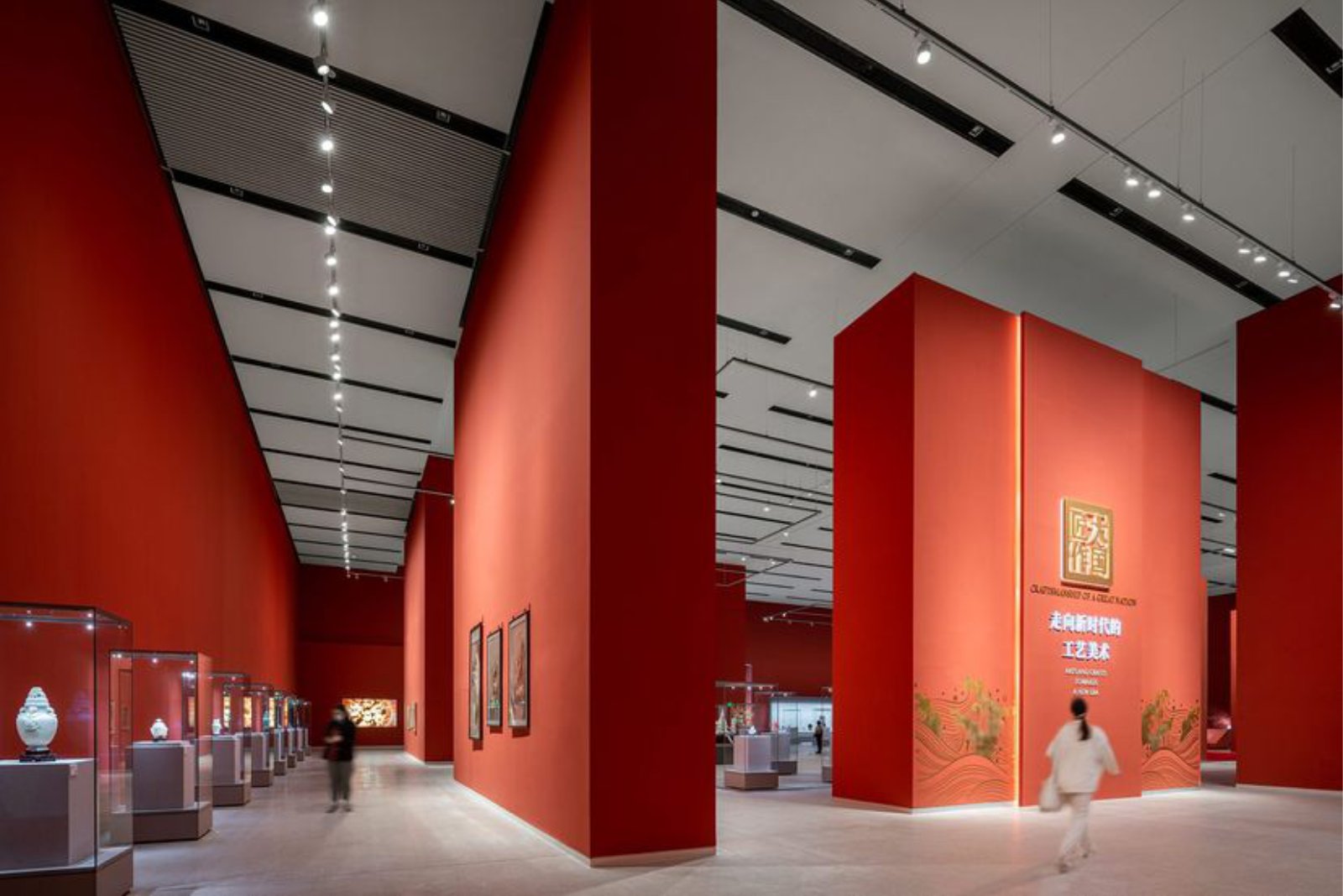
- Location: Beijing, China
- Architect: gmp
- Design Team: Meinhard von Gerkan and Stephan Schütz with Nicolas Pomränke
- Partner Practice in China: China Academy of Building Research (CABR)
- Client: Chinese National Academy of Arts
- GFA: 91,126 m2
- Year: 2022
- Photographs: CreatAR Images, Courtesy of gmp

